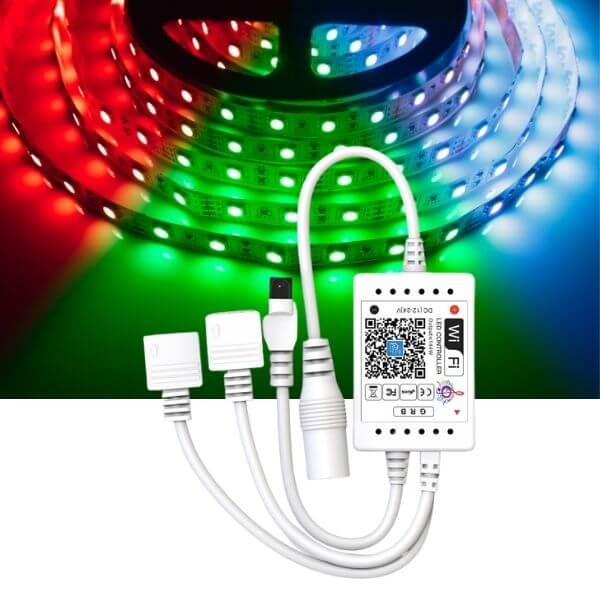Dazzling RGB LED lighting can greatly enhance any space visually. However, realizing your creative and aesthetic vision hinges on picking the RGB LED controller optimally suiting your unique lighting project and setup. But with a dizzying range of controller models, brands, and technical specs available, identifying that ideal RGB LED controller match can prove challenging.
This guide distills key decision factors when selecting an RGB LED controller down to 7 essential tips. Follow this advice for guaranteeing controller-to-LED compatibility, functionality, future flexibility and budget alignment.

Table of Contents
ToggleCarefully Calculate Required LED Channel Capacity
The number one specification check is your RGB controller’s channel capacity, dictating how many separate LED strip lengths or individual bulbs connect for independent control. Controllers usually support 10 to 100+ intelligent lighting zones. Audit your existing LED installation or project plan to derive the quantity of RGB elements needing independent manipulation. Purchase a controller boasting enough channel capacity with comfortable headroom allowing future expansion.
Verify Your RGB LED Controller’s Total Wattage Rating
While linking dozens of LEDs seems impressive, understand controllers have defined limits regarding total wattage they can safely deliver while avoiding overheating or electrical faults. Budget RGB controllers may only support around 60 watts total, while higher-end hardware can supply 500-1000+ watts continuously across extensive LED grids. Tally the rated wattage of all planned LED strips, accounting for concurrent use. Compare against prospective controller wattage ratings to avoid tripped breakers or burnt-out components.
Determine Optimal Control Connectivity Method
RGB LED controllers connect to associated lighting elements either via wired serial protocols or wireless standards like Bluetooth and WiFi. Consider physical installation factors – wire-free options prevent tearing into existing construction for routing cabling to lights but may suffer intermittent connectivity issues. Count distance between your controller location and LED deployment areas when balancing connectivity reliability versus installation complexity.
Double Check Controller-to-LED Hardware Compatibility
While RGB denotes red, green and blue color mixing capability, variations exist even within RGB equipment depending on voltage requirements and proprietary control signaling. Common compatibility issues arise from assuming any RGB controller universally works with all RGB LED strips or bulbs. Save major hassles down the road by cross-checking your planned lighting hardware against controller supported device lists and technical specifications first.
Identify Desired LED Control Mechanisms
Today’s LED dimmer controllers empower manipulating connected lighting through interfaces like physical remotes, smartphones and tablets, voice assistants and even web apps and Dashboards – sometime all within the same system! Determining your must-have methods for changing LED colors, dimming, or activating effects ensures picking hardware delivering the exact user experience you require. Don’t overpay for advanced but unused features.
Evaluate Smart Home Integration Support
Many modern RGB LED lighting rigs don’t operate as isolated systems. Opting for an advanced controller integrating with popular smart home platforms like Amazon Alexa, Google Home or Apple HomeKit allows unified lighting control alongside other connected appliances, security systems and entertainment gear. If smart ecosystem interoperability is important for your goals, ensure any controller under consideration properly supports your particular smart home framework before purchasing.
Set Realistic Budget Expectations
With RGB LED controller hardware spanning simple remotes under $20 to commercial-grade rack-mounted units approaching $1000, setting realistic budget expectations prevents sticker shock down the road. Generally price corresponds to capacity – low-cost controllers may only drive a few LED strips while pro hardware manipulates vast lighting grids. Consider how much expansion you may want long-term when baseline budgeting to save re-buying items later.
Following this decision-making guidance when evaluating RGB LED controllers ensures picking gear delivering flawless LED compatibility, ideal control mechanisms and smart integration within budget. Let these tips guide you towards RGB illumination success!
